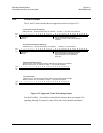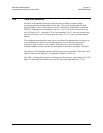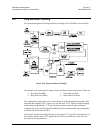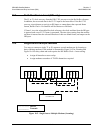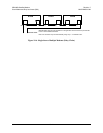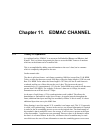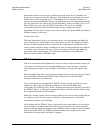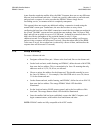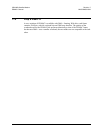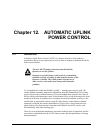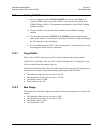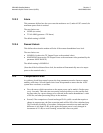
CDM-600 Satellite Modem Revision 7
EDMAC Channel MN/CDM600.IOM
11–2
known state. In the receiver, having synchronized to the frame, the de-scrambler can
begin its processing at exactly the right time. This method does not multiply errors, and
therefore has a clear advantage over V.35 scrambling. This is fortunate, as there is a
penalty to be paid for adding the framing. By adding the extra 5% to the transmitted data
rate, the effective Eb/No seen by the user will degrade by a factor of 10log(1.05), or 0.21
dB (0.07dB in the case of the two BPSK Turbo rates). The use of an externally
synchronized scrambler and descrambler almost exactly compensates for this
degradation. The net effect is that the user will see effectively identical BER performance
whether framing is used or not.
On the receive side:
When the demodulator locks to the incoming carrier, it must go through the additional
step of searching for, and locking to the synchronization word. This uniquely identifies
the start of frame, and permits the extraction of the overhead bytes and flag bits at the
correct position within the frame. In addition, the start of frame permits the de-scrambler
to correctly recover the data. The user’s data is extracted, and sent through additional
processing, in the normal manner. The extracted overhead bytes are examined to
determine if they contain valid M&C bytes.
11.2 M&C Connection
Data to be transmitted to the distant-end is sent to a local unit via the remote control port.
A message for the distant-end is indistinguishable from a ‘local’ message - it has the
same structure and content, only the address will identify it as being for a distant-end
unit.
Before the M&C data can be successfully transmitted and received, pairs of units must be
split into EDMAC Masters and EDMAC Slaves. Masters are local to the M&C
Computer, and Slaves are distant-end.
Now, a unit that has been designated an EDMAC master not only responds to its own
unique bus address, but it will also be configured to listen for the address that
corresponds to its EDMAC Slave. When a complete message packet has been received by
the EDMAC Master, it will begin to transmit this packet over the satellite channel, using
the overhead bytes that become available.
Note: The ‘normal’ protocol for the message packet is not used over the satellite path, as
it is subject to errors. For this reason, a much more robust protocol is used which
incorporates extensive error checking.
At the distant-end, the EDMAC slave, configured for the correct address, receives these
bytes, and when a complete packet has been received, it will take the action requested,
and then send the appropriate response to the EDMAC Master, using the return overhead
path on the satellite link. The EDMAC Master assembles the complete packet, and
transmits the response back to the M&C Computer.




